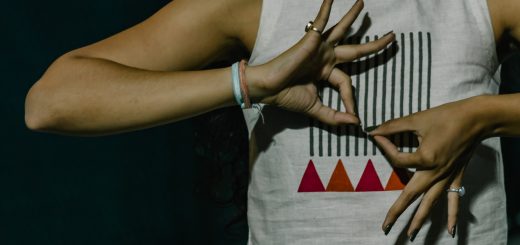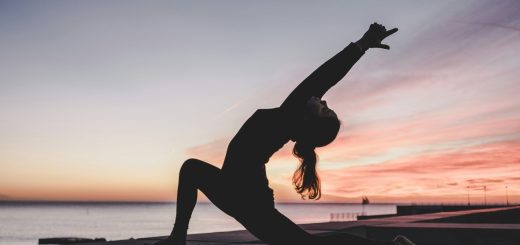Find the Perfect Yoga Block for Your Practice

Before diving in, please note: This post is for informational purposes only. If you’d like to know more about how we approach topics, feel free to check out our friendly Disclaimer Page.
Hey there, amazing readers! 🖐️ Just a quick note: yes, we know there are a lot of ads here. Trust us, we get it—it’s not the prettiest look, but they help us keep this blog alive and kicking. Those pesky little ads cover the costs of all the behind-the-scenes magic, from hosting and tech stuff to creating content we hope you’ll love.
We’re committed to delivering quality posts, and your support (even just sticking around despite the ads) means everything to us. So, bear with us, and thanks for helping us keep the good vibes rolling. Now, on to the fun stuff! 😉
TRANSLATE BUTTON AT THE END OF THE ARTICLE
A Quick Overview
When it comes to yoga, every little detail counts.
From the right mat to the perfect block, each accessory plays a role in enhancing our practice.
If you’re new to yoga or just looking to improve your experience, you might be pondering how to choose the right yoga block.
This little piece of equipment can make a huge difference, offering support, stability, and even a little encouragement during your practice.
Let’s dive into the world of yoga blocks and help you find the one that suits you best.
Discover the Benefits of Using a Yoga Block Today!
Yoga blocks are more than just props; they’re like your dependable sidekicks on the mat.
They help bridge the gap between your body and the ground, making poses more accessible.
If you’re new to yoga, blocks can ease you into difficult postures.
Imagine trying to reach the floor in a forward bend; with a block, you can bring the floor closer to you!
Using blocks can improve your alignment.
By providing stability, they assist in maintaining proper posture during various poses.
This can help prevent strain, especially in challenging positions like triangle pose or half-moon.
I remember when I first started practicing, my balance was all over the place.
A block helped me find my footing!
Blocks also allow for greater range of motion.
If you’re feeling tight or aren’t quite flexible yet, they can provide the extra lift you need.
Plus, they encourage deeper stretches, enabling you to explore your limits safely.
Think of them as tools for growth.
Ever experienced fatigue in your arms during a pose?
Blocks can support your weight, alleviating pressure and letting your body relax into the posture.
This is particularly useful in poses like downward dog or during restorative practices.
Trust me, your arms will thank you!
Lastly, blocks can enhance your practice by adding variety.
You can experiment with different poses and techniques.
Using them creatively can transform your usual routine into something refreshing and exciting.
Different Types of Yoga Blocks: Which One is Right for You?
Now that we’re clear on the benefits, let’s chat about the different types of yoga blocks.
First up, we have the traditional foam blocks.
These are lightweight and soft, making them perfect for beginners.
They’re easy to carry around and provide a bit of cushioning.
Next, there are cork blocks.
If you’re someone who values a natural feel, cork can be a fantastic option.
They offer more stability than foam, thanks to their weight.
Plus, cork has a lovely texture that feels great in the hands.
Bamboo blocks are another option, combining aesthetics with functionality.
They look beautiful and are often more eco-friendly than other materials.
However, they can be a bit heavier, which might not be ideal for everyone.
You may also come across rubber blocks.
These are sturdy and provide excellent grip, making them perfect for hot yoga or sweaty sessions.
The downside?
They can be a little heavier to lug around.
Lastly, there are inflatable blocks.
These are the travel-friendly option!
You can deflate them and easily pack them in your bag.
However, they might not provide the same level of support as solid blocks.
Think about your personal preferences and practice style when choosing.
Do you prioritize portability, grip, or something more eco-friendly?
Material Matters: Foam, Cork, or Bamboo Blocks Explained
Diving deeper into materials, let’s break down the pros and cons of each type of block.
Foam blocks are a favorite for many because they’re lightweight and soft.
They can take a beating and still maintain their form.
If you drop one, no worries – they’re durable and won’t crack easily.
However, if you’re someone who craves stability, cork might be your go-to.
Cork blocks provide a firm surface that won’t squish under pressure.
They’re also more slip-resistant, which is a plus during sweaty practices.
Although they are heavier than foam blocks, many find the trade-off in stability worth it.
Bamboo blocks are fantastic for those seeking a natural aesthetic.
They’re often treated with eco-friendly finishes, making them an environmentally conscious choice.
They’re durable and sturdy, but again, the weight can be a consideration if you’re frequently on the move.
Rubber blocks, on the other hand, are generally the heaviest option.
They offer fantastic grip and won’t slide around during practice.
If you sweat a lot, these can be a lifesaver.
However, they may not be for you if you prefer lightweight equipment.
Inflatable blocks stand out for travel.
They’re easy to pack but may not provide the stability some practitioners need.
It’s all about what feels right for you and your practice.
Choosing the Right Size: Height and Dimensions to Consider
When picking the perfect yoga block, size really does matter.
Most blocks come in standard dimensions of around 9"x6"x4".
However, taller blocks are available for those who need an extra lift.
Consider your height and the types of poses you practice.
If you’re on the shorter side, opt for a block that’s not too tall.
Conversely, if you’re taller or have longer limbs, a higher block might serve you better.
Remember, comfort is key!
Some blocks come in a wider design, which can provide more surface area for support.
This can be particularly helpful for balancing poses.
A wider block can feel more stable and secure underfoot.
Don’t forget about thickness!
Thicker blocks can provide a sturdier feel, while thinner ones may be easier to maneuver during practice.
Try a few out and see what feels best in your hands.
Lastly, think about travel.
If you’re planning to bring your block to class or on vacation, a lighter, smaller option might be ideal.
Price Points: Budget-Friendly vs. Premium Yoga Blocks
Yoga blocks come in a range of prices, and that’s good news for us all!
If you’re just starting, you can easily find affordable options without sacrificing quality.
Basic foam blocks often cost around $10-$15.
They’re perfect for testing the waters without breaking the bank.
On the other hand, cork and bamboo blocks usually fall into the $20-$30 range.
These tend to be more durable and can last much longer with proper care.
If you’re serious about your practice, investing in a good-quality block can be worthwhile.
Premium options can go up to $50 or more.
These might feature unique designs, high-quality materials, or additional features like built-in handles.
While they can be enticing, they’re not always necessary for everyone.
Before purchasing, think about how often you’ll use the block.
If yoga is a regular part of your routine, investing in a better quality block might pay off.
But if you’re just dabbling, a budget-friendly option could be the way to go.
Eco-Friendly Options: Sustainable Yoga Blocks to Explore
In our journey towards sustainability, choosing eco-friendly yoga blocks can make a difference.
Many manufacturers are now focusing on creating blocks from renewable materials.
Cork blocks, for example, are harvested from the bark of cork oak trees without harming them.
These trees can regenerate their bark, making cork a sustainable choice.
Bamboo blocks are another eco-friendly option.
Bamboo grows rapidly and can be harvested without depleting resources.
It’s a sturdy material, too, making it ideal for yoga blocks.
Recycled foam blocks are also gaining popularity.
These blocks are made from leftover foam materials, diverting waste from landfills.
They provide good support while being kinder to the environment.
When searching for environmentally friendly options, look for certifications or endorsements from sustainability organizations.
Many brands proudly display their eco-credentials, making it easier for us mindful consumers to choose wisely.
Incorporating eco-friendly blocks into your practice not only benefits you but also supports a more sustainable planet.
Plus, you get to feel good about your choices!
Enhancing Your Practice: How Yoga Blocks Can Help
Yoga blocks can serve as transformative tools in your practice.
Think of them as a bridge to deeper understanding and exploration of your body.
By using blocks, you can modify poses to suit your needs.
For instance, during a seated forward bend, placing a block under your hands can help you reach forward more comfortably.
Blocks can also support restorative practices.
I love using blocks during savasana.
Placing one under my knees eases tension in my lower back, allowing me to sink deeper into relaxation.
Another way blocks enhance practice is through balance.
In poses like tree or warrior III, a block can act as a stabilizer, giving you more confidence to explore your limits.
It’s like having a safety net!
Blocks also encourage mindfulness.
When you integrate them into your practice, you become more aware of your body and its needs.
This can lead to greater body awareness and a more profound connection to your breath.
Finally, don’t overlook the creative potential.
Use blocks to create new shapes or variations of familiar poses.
You might discover a new favorite that transforms your routine!
Safety First: Using Yoga Blocks to Prevent Injuries
Safety should always be a priority on the mat.
Yoga blocks can significantly reduce the risk of injury by providing support and stability.
If you’re new to yoga, using blocks can help you avoid straining muscles.
They can assist in achieving correct alignment, which is vital for preventing injuries.
If you’re working on flexibility, blocks can help you ease into stretches.
Instead of pushing your body to the limit, use a block to bring the floor closer to you.
This way, you can gradually work on your flexibility without overexerting yourself.
In balancing poses, blocks can offer a stable base.
If you’re wobbling, placing a block under your hand can provide the extra support needed.
This stability can help you build strength and confidence over time.
It’s essential to listen to your body.
If a pose feels uncomfortable, don’t hesitate to grab a block.
Each time we practice, we learn to tune into what our body needs.
Finally, consider the surfaces you practice on.
A non-slip block can be a game changer during sweaty sessions.
Ensuring your block stays put keeps you safe and focused.
Versatile Uses: Creative Ways to Incorporate Blocks
Yoga blocks aren’t just for beginners—they’re versatile tools that can elevate any practice!
You can use them in various ways to spice up your routine.
For starters, they can act as an extension of your limbs.
In poses like triangle or side angle, placing a block under your bottom hand helps you achieve proper alignment without straining.
Blocks can also assist in restorative practices.
Use them to support your body during gentle stretches or relaxation poses.
For example, in supported bridge pose, placing a block under your sacrum allows you to relax more fully.
You can use blocks as props for strength training as well.
In poses like chaturanga, placing a block under your chest can encourage proper alignment and help you build strength safely.
Another fun idea: use blocks in your home workout routine.
They can enhance Pilates or bodyweight exercises by providing support or stability.
Get creative!
Experiment with different configurations of blocks to find new ways to challenge yourself.
You might discover a unique approach that becomes a staple in your practice.
Yoga Block Reviews: Top Picks for Every Practitioner
As we explore the market for yoga blocks, I’ve gathered some popular options that cater to various needs.
Let’s take a look at some favorites:
Manduka Cork Yoga Block: This cork block is sturdy and provides excellent grip.
It’s eco-friendly and perfect for those who want a solid base in their practice.
Liforme Yoga Block: Made from natural rubber, this block offers a firm yet cushy feel.
It’s great for both stability and support during balancing poses.
Gaiam Foam Yoga Block: Lightweight and affordable, this foam block is perfect for beginners.
It’s soft and comes in various colors, making it a fun addition to any practice.
Jade Yoga Harmony Block: Made from eco-friendly materials, this block is durable and provides great support.
It’s perfect for those seeking a balance between sturdiness and weight.
Yoga Design Lab Cork Block: This beautifully designed block combines aesthetics with function.
Made from natural cork, it’s a reliable option for any practitioner.
Take time to read reviews and see what other practitioners are saying.
The right block for you might depend on personal preferences, body type, and practice style.
Caring for Your Yoga Blocks: Maintenance Tips and Tricks
Once you find your ideal yoga block, proper care is crucial to ensure it lasts.
Each material requires different maintenance, so let’s break this down.
Foam blocks can be wiped down with a damp cloth and mild soap.
Avoid harsh chemicals, as they can degrade the foam over time.
For deep cleaning, soak them in warm water and soap, then let them air dry.
Cork blocks can be cleaned similarly.
A gentle wipe with a damp cloth is usually sufficient.
If they become grimy, use a natural cleaner to freshen them up.
Always allow them to dry completely to prevent mold.
Bamboo blocks should be treated with care.
Wipe them down with a damp cloth and occasionally apply a natural oil to keep the wood hydrated.
Avoid soaking them in water, as prolonged exposure can warp the wood.
For rubber blocks, a simple wipe with a damp cloth is usually enough to keep them in good shape.
If they start to smell, a little baking soda can help neutralize odors.
Regardless of the type, store your blocks in a cool, dry place.
Keeping them away from direct sunlight helps prevent deterioration and maintains their integrity.
Ready to Choose? Final Tips for Picking Your Perfect Block!
So, you’re ready to choose your yoga block!
Here are some final tips to help you make the best decision:
Try Before You Buy: If possible, test out blocks in a store or yoga class.
Feeling their weight and texture can help you decide what works best for you.
Listen to Your Body: Pay attention to how your body responds during practice.
A block that feels right and offers support is key.
Consider Your Style: Think about your yoga style.
If you often practice restorative or gentle yoga, a softer block may be perfect.
If you’re into power yoga, something more solid might suit your needs better.
Remember Your Goals: Whether you’re aiming for flexibility, strength, or balance, choose a block that aligns with your goals.
Don’t Rush: Take your time to research and make an informed choice.
The right block can truly enhance your practice.
Finding the perfect yoga block is an adventure in itself.
The right one can support you, encourage you, and help you grow in your practice.
Happy shopping!
Conclusion
Choosing the right yoga block can greatly enhance your practice.
From understanding the benefits to exploring different materials and sizes, this little accessory offers so much potential.
Whether you’re a beginner or a seasoned yogi, a block can be a valuable tool in your journey.
Remember to consider your personal needs, practice style, and budget as you shop.
With the right block by your side, you’ll be well on your way to a more fulfilling yoga experience.
Namaste!

The Enlightenment Journey is a remarkable collection of writings authored by a distinguished group of experts in the fields of spirituality, new age, and esoteric knowledge.
This anthology features a diverse assembly of well-experienced authors who bring their profound insights and credible perspectives to the forefront.
Each contributor possesses a wealth of knowledge and wisdom, making them authorities in their respective domains.
Together, they offer readers a transformative journey into the realms of spiritual growth, self-discovery, and esoteric enlightenment.
The Enlightenment Journey is a testament to the collective expertise of these luminaries, providing readers with a rich tapestry of ideas and information to illuminate their spiritual path.
Our Diverse Expertise 🌟
While our primary focus is on spirituality and esotericism, we are equally passionate about exploring a wide range of other topics and niches 🌍📚. Our experienced team is dedicated to delivering high-quality, informative content across various subjects ✨.
To ensure we provide the most accurate and valuable insights, we collaborate with trusted experts in their respective domains 🧑🏫👩🏫. This allows us to offer well-rounded perspectives and knowledge to our readers.
Our blog originally focused on spirituality and metaphysics, but we’ve since expanded to cover a wide range of niches. Don’t worry—we continue to publish a lot of articles on spirituality! Frequently visit our blog to explore our diverse content and stay tuned for more insightful reads.






